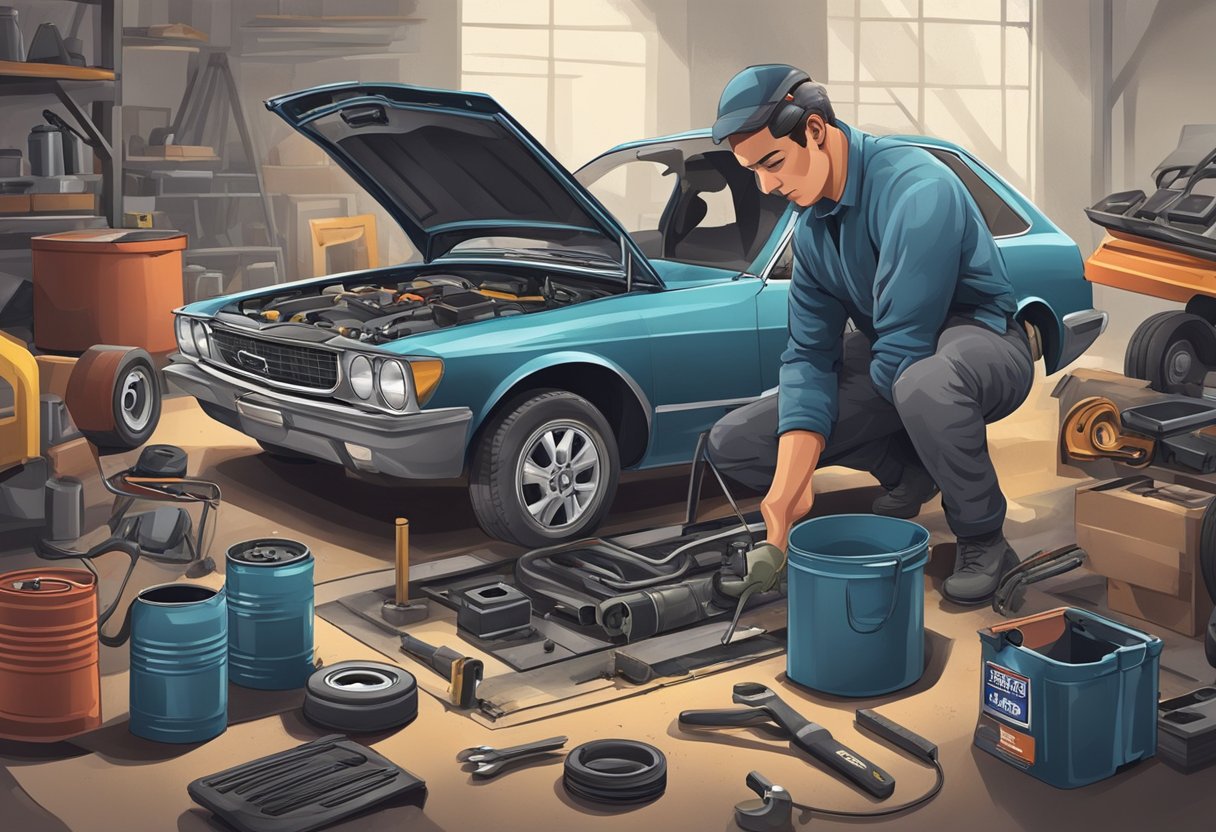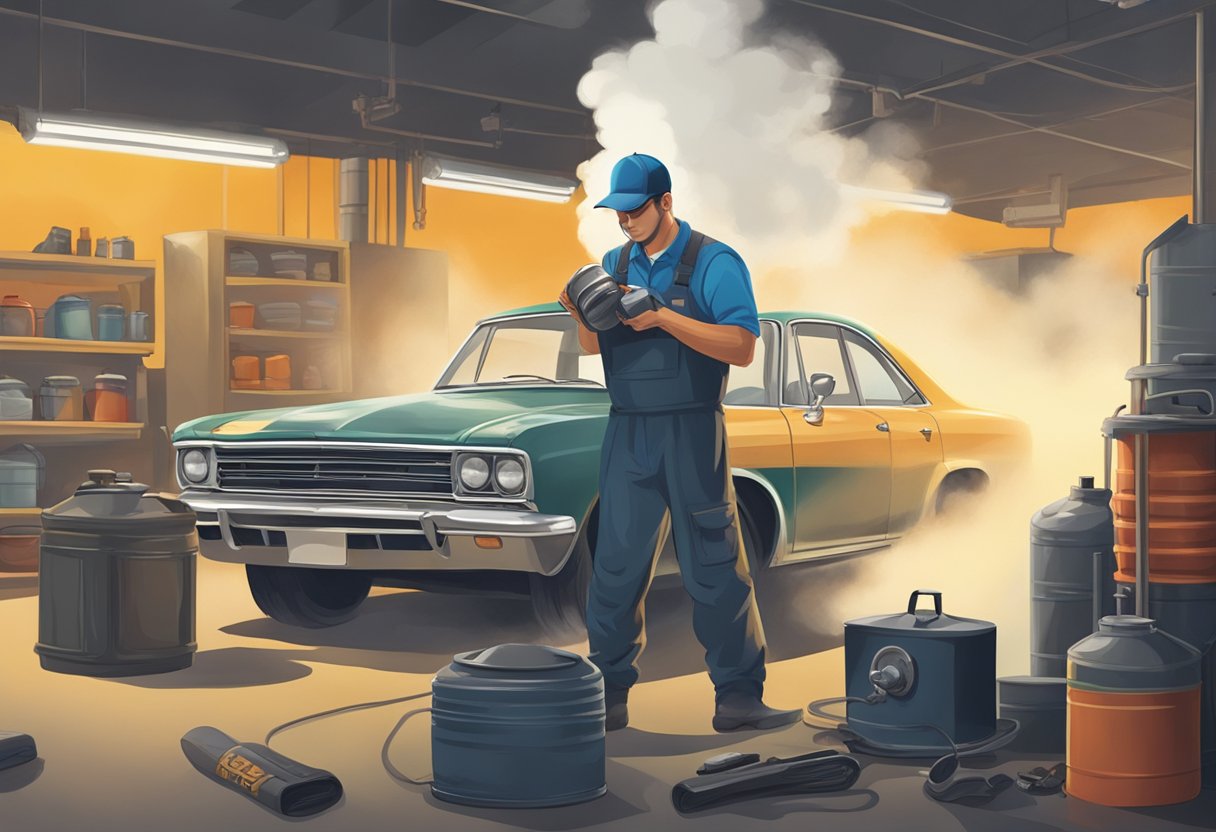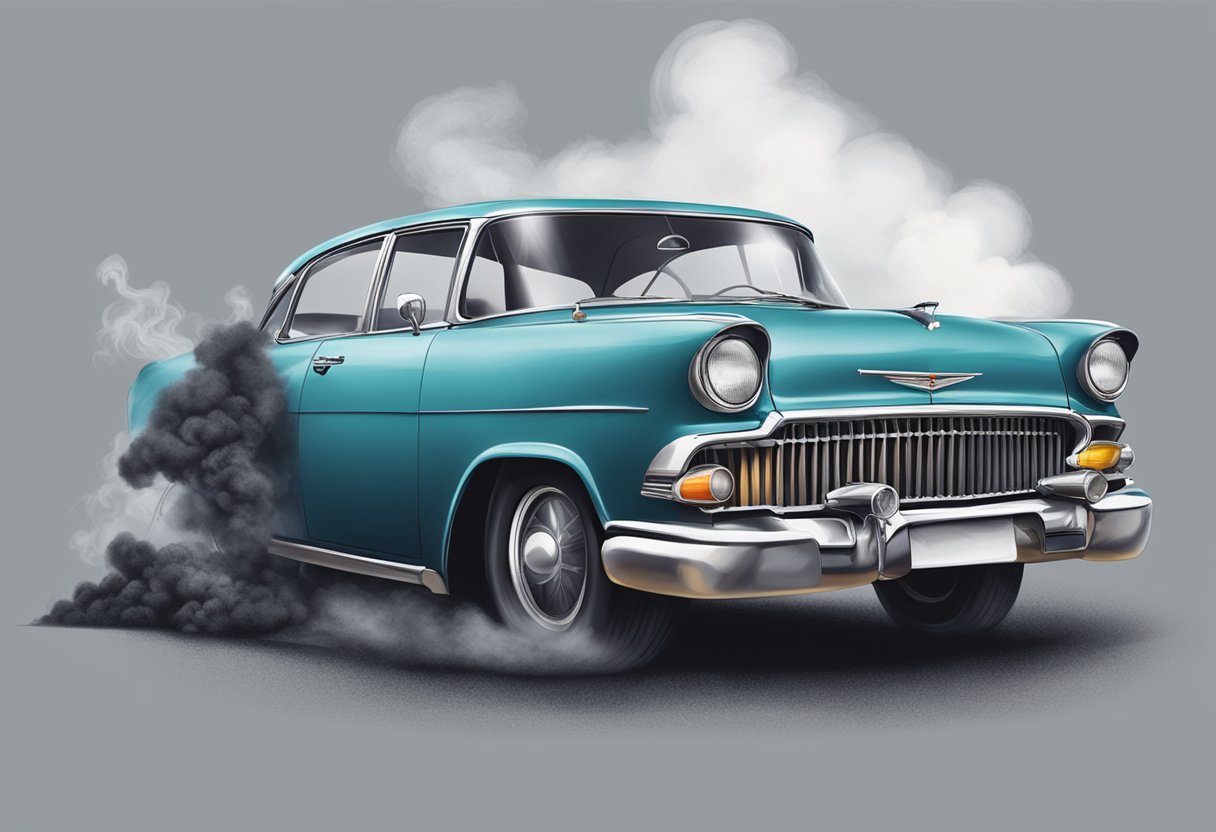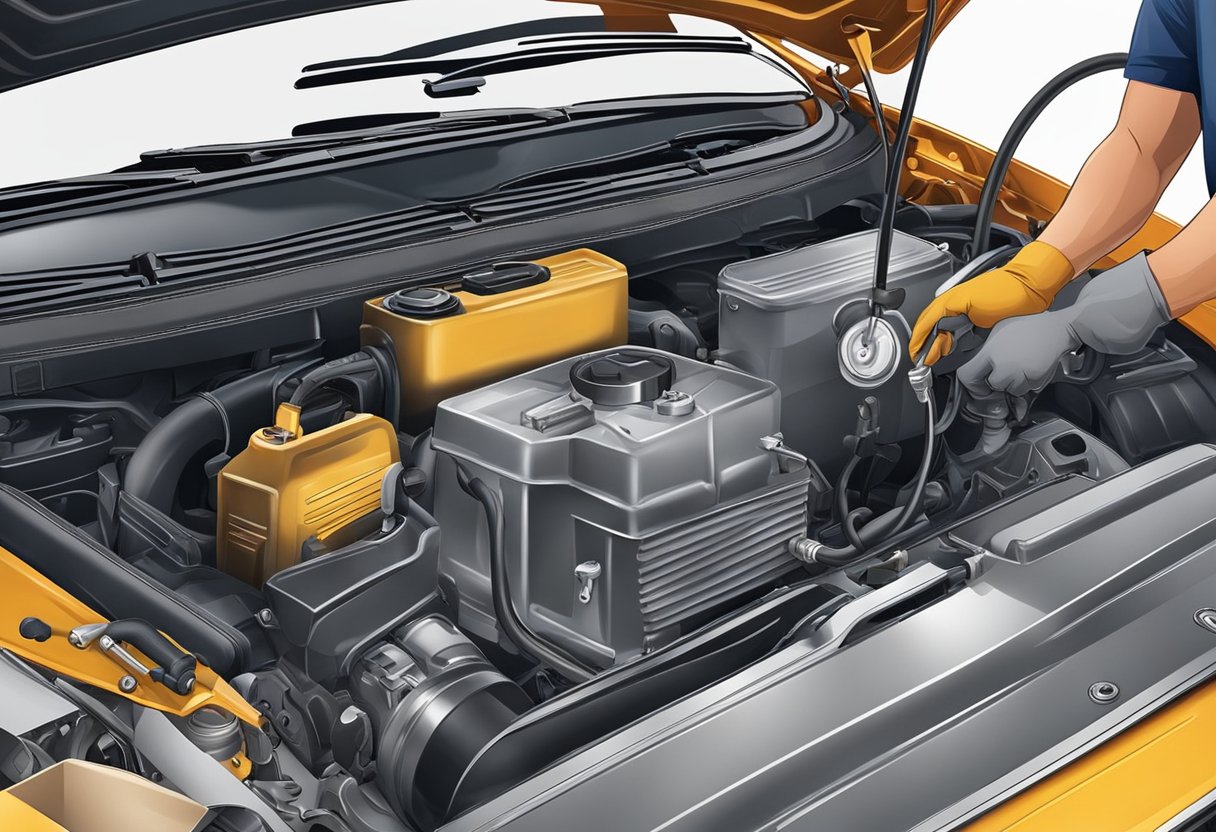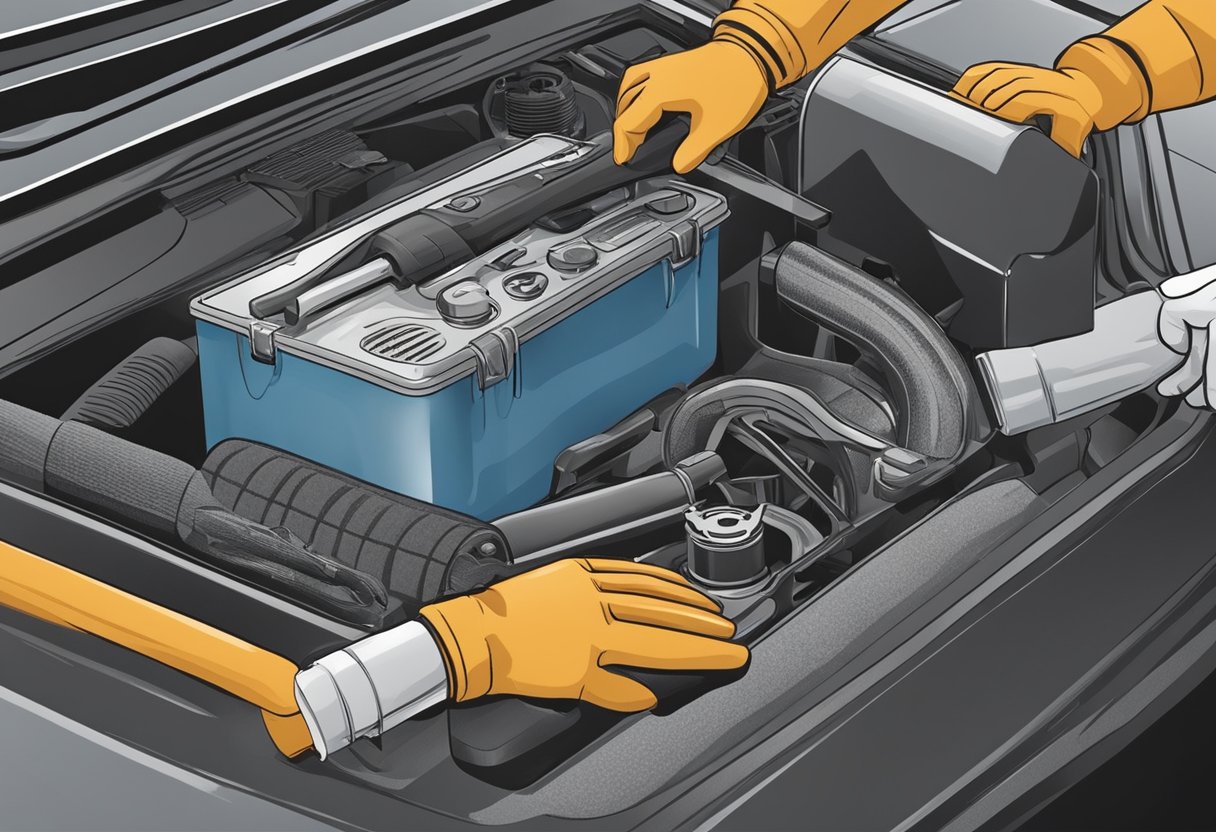If you’re a car owner, you know that maintaining your vehicle is an essential part of car ownership. One of the components that you need to keep an eye on is your charcoal canister. The charcoal canister is an integral part of your car’s Evaporative Emission Control System (EVAP). It helps to reduce the amount of fuel vapors that escape into the environment, reducing pollution.
Knowing when to replace your charcoal canister is crucial to keep your car running smoothly and to reduce harmful emissions. A bad charcoal canister can cause a variety of problems, including poor engine performance, difficulty refueling, and a fuel smell in the vehicle’s interior. If you notice any of these symptoms, it’s time to get your charcoal canister replaced. However, it’s essential to note that not all symptoms point to a bad charcoal canister, so it’s best to get your car checked by a professional if you’re unsure.
Understanding the Charcoal Canister
The charcoal canister is a critical component of your vehicle’s evaporative emission control system (EVAP). It is responsible for capturing and storing fuel vapors that would otherwise escape into the atmosphere, contributing to air pollution. In this section, you’ll learn more about the role of the charcoal canister and the other components of the EVAP system.
Role in Emissions Control
The EVAP system is designed to prevent the release of fuel vapors into the atmosphere. It works by capturing these vapors and storing them in the charcoal canister until they can be safely purged into the engine and burned off. The charcoal canister is filled with activated charcoal, which absorbs the fuel vapors and prevents them from escaping into the air.
Components of the EVAP System
The EVAP system consists of several components that work together to capture and store fuel vapors. These components include:
-
Fuel Tank: The fuel tank is where the fuel is stored in your vehicle. It is also where fuel vapors are generated.
-
Purge Valve: The purge valve is responsible for opening and closing the EVAP system to allow fuel vapors to be purged into the engine and burned off.
-
Charcoal Canister: The charcoal canister is where fuel vapors are stored until they can be safely purged into the engine.
-
Activated Charcoal: The activated charcoal inside the charcoal canister absorbs fuel vapors and prevents them from escaping into the atmosphere.
Overall, the charcoal canister plays a critical role in your vehicle’s emissions control system. It is important to ensure that it is functioning properly and to replace it if it becomes clogged or damaged.
Symptoms of a Failing Charcoal Canister
The charcoal canister is an important component of the EVAP (Evaporative Emission Control System) in your vehicle. It helps to capture and store fuel vapors from the fuel tank, preventing them from being released into the atmosphere. When the charcoal canister fails, it can cause several problems in your vehicle. Here are some of the symptoms of a failing charcoal canister that you should be aware of:
Check Engine Light and Error Codes
One of the most common symptoms of a failing charcoal canister is the illumination of the check engine light on your dashboard. The check engine light can be triggered by several issues, and a failing charcoal canister is one of them. When the EVAP system detects a problem with the charcoal canister, it will set a diagnostic trouble code (DTC) and illuminate the check engine light. If you notice the check engine light is on, it is recommended that you take your vehicle to a qualified mechanic to diagnose the problem.
Fuel Odor and Fuel Economy Issues
Another symptom of a failing charcoal canister is a fuel odor coming from your vehicle. When the charcoal canister fails, fuel vapors can escape from the fuel tank and enter the atmosphere. This can cause a noticeable fuel odor inside and outside your vehicle. In addition to the fuel odor, a failing charcoal canister can also cause fuel economy issues. If you notice that your vehicle is using more fuel than usual, it could be due to a failing charcoal canister.
Engine Performance Problems
A failing charcoal canister can also cause engine performance problems. The EVAP system is designed to maintain the proper fuel-to-air ratio in your engine. When the charcoal canister fails, it can cause a vacuum leak, which can disrupt the fuel-to-air ratio and cause engine performance problems. Some of the engine performance problems that can be caused by a failing charcoal canister include rough idling, stalling, and hesitation.
In conclusion, a failing charcoal canister can cause several problems in your vehicle. If you notice any of the symptoms mentioned above, it is recommended that you take your vehicle to a qualified mechanic to diagnose and replace the failing charcoal canister.
When to Replace Your Charcoal Canister
If you own a vehicle with an evaporative emissions control system, you likely have a charcoal canister. The charcoal canister is a vital component of the system, as it captures and stores fuel vapors that would otherwise escape into the atmosphere. Over time, the charcoal canister can become clogged or damaged, which can lead to a variety of issues. Here’s what you need to know about when to replace your charcoal canister.
Lifespan and Maintenance
Charcoal canisters have a lifespan of approximately 10 years or 150,000 miles, whichever comes first. However, this can vary depending on the make and model of your vehicle. Regular maintenance can extend the lifespan of your charcoal canister. You should have your charcoal canister inspected every 30,000 miles or so, and replaced if necessary.
After a Failed Emissions Test
If your vehicle has failed an emissions test, it may be due to a malfunctioning charcoal canister. A failed emissions test is a clear sign that your charcoal canister needs to be replaced.
Identifying Damage or Leaks
If you notice a fuel smell in your vehicle’s interior or difficulty refueling, it could be a sign that your charcoal canister is damaged or leaking. You may also hear a hissing noise from the fuel tank. If you notice any of these symptoms, you should have your charcoal canister inspected immediately.
In summary, the lifespan of a charcoal canister is approximately 10 years or 150,000 miles, but regular maintenance can extend its lifespan. If your vehicle fails an emissions test or you notice signs of damage or leaks, you should have your charcoal canister replaced as soon as possible.
How Does a Faulty Charcoal Canister Affect Engine Leaks and Gasket Issues?
A faulty charcoal canister can lead to engine leaks and gasket issues. The canister is designed to capture and store fuel vapors, but if it fails, it can cause a vacuum leak, putting extra strain on the engine and potentially leading to head gasket or valve cover gasket issues.
What Are the Signs and Symptoms of a Faulty Charcoal Canister and When Should It be Replaced?
The signs of a faulty charcoal canister include a strong smell of gasoline, a rough idle, and a illuminated check engine light. It should be replaced if you notice these symptoms. Regular car air filter replacement is essential for maintaining optimal engine performance and fuel efficiency.
How Can a Bad Idle Air Control Valve Affect the Function of a Charcoal Canister in a Car’s Emission Control System?
A bad idle air control valve can disrupt the proper air-fuel mixture, affecting the performance of the charcoal canister in a car’s emission control system. The charcoal canister relies on stable engine idling to effectively capture and store fuel vapors, so identifying bad idle air control valve is crucial for maintaining emissions compliance.
Replacing the Charcoal Canister
If you have determined that your charcoal canister needs replacement, you can either replace it yourself or seek professional help. Here are the two options:
Step-by-Step Replacement Guide
If you are confident in your mechanical abilities, you can replace the charcoal canister yourself. Here is a step-by-step guide to help you:
- Locate the canister: The charcoal canister is usually located near the fuel tank or engine. Consult your vehicle’s manual if you are unsure where to find it.
- Disconnect the hoses: Use pliers to loosen and remove the clamps that hold the hoses to the canister. Then, carefully pull the hoses off the canister.
- Remove the canister: Use a wrench to loosen and remove the bolts that hold the canister in place. Then, carefully remove the canister from its mounting bracket.
- Install the new canister: Place the new canister in the mounting bracket and tighten the bolts. Then, reattach the hoses and tighten the clamps.
Professional Replacement and Costs
If you are not comfortable with replacing the charcoal canister yourself, you can seek professional help. A mechanic or technician can replace the canister for you. The cost of replacing a charcoal canister can vary depending on the make and model of your vehicle, as well as the location of the canister. According to Mechanic Base, the average cost of replacing a charcoal canister is between $130 and $300. This includes the cost of the canister and labor. However, the cost can be higher if your vehicle has a complex fuel system or if the canister is difficult to access.
In summary, replacing a charcoal canister can be done yourself or by a professional. If you choose to do it yourself, follow the step-by-step guide carefully. If you choose to seek professional help, be prepared to pay for the cost of the canister and labor.
Preventive Measures and Best Practices
To ensure the longevity of your charcoal canister, it’s important to follow some preventive measures and best practices. Here are some tips to help you keep your evap canister in good condition:
- Regular maintenance: Have your charcoal canister inspected and cleaned at least once every 15,000 miles. This will help prevent clogs and ensure that the canister is functioning properly. If your canister is not cleanable, you may need to replace it entirely.
- Check fuel system components: Check your fuel system components, including hoses and connectors, for any signs of wear and tear. Replace any damaged or leaking components immediately to prevent any fuel vapors from escaping into the atmosphere.
- Refueling: When refueling, make sure to tighten the gas cap properly. A loose gas cap can cause fuel vapors to escape and can trigger your check engine light.
- Emissions tests: If your car is due for an emissions test, make sure to have your charcoal canister inspected beforehand. A malfunctioning canister can cause your car to fail the test, which can result in costly repairs.
- Avoid overfilling your tank: Overfilling your tank can cause liquid fuel to enter the charcoal canister, which can damage it and cause it to malfunction.
By following these preventive measures and best practices, you can help ensure that your charcoal canister is functioning properly and that your car is emitting fewer harmful pollutants into the environment.
As an Amazon Associate we earn from qualifying purchases.








